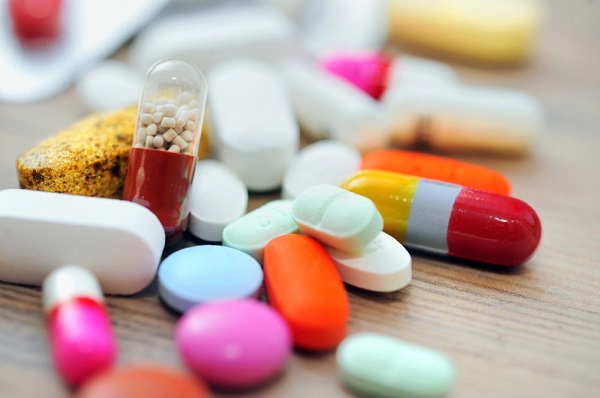The global pharmaceutical industry is facing a significant challenge: the proliferation of counterfeit drugs.
These fake medications pose serious risks to public health, undermine trust in healthcare systems, and lead to substantial financial losses for legitimate pharmaceutical companies.
As counterfeiters become increasingly sophisticated, it is imperative to establish robust supply chains that enhance traceability, ensure product integrity, and protect consumers.
This article explores the counterfeit drug problem, its implications, and the strategies that can be employed to build resilient supply chains capable of combating this growing threat.
The Counterfeit Drug Crisis
Counterfeit drugs are defined as products that are deliberately and fraudulently mislabelled, with respect to their identity or source. This issue is pervasive globally, affecting both developing and developed nations. The World Health Organization (WHO) estimates that one in ten medical products in low- and middle-income countries is substandard or falsified. The impact of counterfeit drugs includes:
- Health Risks: Counterfeit medications can contain harmful ingredients, ineffective doses, or incorrect formulations. Patients relying on these drugs may experience treatment failures or adverse reactions, leading to severe health complications or death.
- Economic Losses: The counterfeit drug trade costs the pharmaceutical industry billions of dollars annually. Legitimate companies face lost revenue, increased regulatory scrutiny, and the need for heightened security measures.
- Erosion of Trust: The presence of counterfeit drugs can erode public trust in healthcare providers and pharmaceutical companies. Patients may become skeptical of the medications they are prescribed, leading to reduced adherence to treatment regimens.
The Role of Supply Chains in Combating Counterfeit Drugs
A robust supply chain is crucial in mitigating the risks associated with counterfeit drugs. Effective supply chain management involves several key strategies:
- Enhanced Traceability:
- Serialization: Implementing unique serial numbers on packaging allows for tracking and tracing throughout the supply chain. This enables stakeholders to verify the authenticity of products at every stage, from manufacturer to pharmacy.
- Blockchain Technology: Blockchain can provide an immutable record of transactions, enhancing transparency and accountability. This technology allows stakeholders to trace a drug’s journey from production to distribution, making it difficult for counterfeit products to enter the market undetected.
- Stronger Regulatory Compliance:
- Adherence to Guidelines: Pharmaceutical companies must comply with national and international regulations concerning drug safety and quality. This includes following Good Distribution Practices (GDP) to ensure that drugs are stored and transported in optimal conditions.
- Collaboration with Authorities: Companies should work closely with regulatory agencies and law enforcement to report counterfeit incidents and develop coordinated responses to combat counterfeit networks.
- Partnerships and Collaborations:
- Industry Collaboration: Pharmaceutical companies should engage in partnerships to share information on counterfeit threats and best practices. Collaborating on anti-counterfeiting initiatives can lead to more effective strategies and resource-sharing.
- Public-Private Partnerships: Governments and private companies can collaborate to implement comprehensive anti-counterfeit measures, including awareness campaigns and enforcement of laws against counterfeiters.
- Technological Innovations:
- Track-and-Trace Systems: Advanced technologies such as RFID (Radio-Frequency Identification) and IoT (Internet of Things) devices can enhance visibility in the supply chain. These systems can monitor and verify product movement in real-time, ensuring that only legitimate products reach consumers.
- Digital Authentication Solutions: Mobile applications and other digital tools can empower consumers to verify the authenticity of their medications by scanning QR codes or entering serial numbers.
- Education and Awareness:
- Training for Healthcare Professionals: Educating healthcare providers about the risks of counterfeit drugs and how to identify them is crucial. Training can empower providers to counsel patients effectively and make informed prescribing decisions.
- Public Awareness Campaigns: Raising public awareness about the dangers of counterfeit drugs and the importance of obtaining medications from legitimate sources can reduce consumer susceptibility to counterfeit products.
Case Studies of Successful Initiatives
Several countries and organizations have implemented successful initiatives to combat counterfeit drugs through robust supply chains:
- The European Union’s Falsified Medicines Directive (FMD): The FMD requires that all prescription medications have unique identifiers and safety features. This regulation has significantly enhanced traceability and product verification across the EU, resulting in a noticeable decrease in counterfeit drugs entering the market.
- The Medicines and Healthcare products Regulatory Agency (MHRA) in the UK: MHRA has implemented a robust system of checks and balances, including mandatory serialization and product verification. The agency collaborates with law enforcement to shut down counterfeit operations and educate the public about the dangers of fake medications.
- Pfizer’s Use of Blockchain Technology: Pfizer has partnered with blockchain companies to pilot a project aimed at improving supply chain visibility and security. By utilizing blockchain, Pfizer can enhance traceability, allowing for more effective identification of counterfeit products.
Conclusion
The counterfeit drug problem is a complex and multifaceted issue that requires a coordinated response from the pharmaceutical industry, regulatory bodies, and consumers.
By implementing robust supply chains that prioritize traceability, regulatory compliance, technological innovations, and public awareness, stakeholders can work together to combat this growing threat.
Addressing the counterfeit drug crisis is not only vital for protecting public health but also essential for restoring trust in the healthcare system and safeguarding the integrity of the pharmaceutical industry.
The time to act is now, and a proactive approach can make all the difference in ensuring that patients receive the safe and effective medications they need.
Also Read
Pharmaceutical logistics hubs: The strategic role of Africa’s growing market
AI, machine learning in predictive demand planning for pharma supply chains

